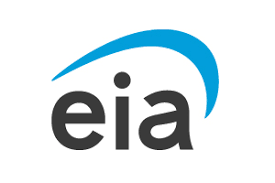· Brian Horton · Natural gas storage · 3 min read
EIA Confirms 13 Bcf Injection, Below Market Expectations in Latest Natural Gas Storage Report
EIA reports a 13 Bcf injection into U.S. natural gas storage for the week ending Aug. 15, 2025, below forecasts. Inventories remain 7% above seasonal norms.

The latest U.S. Energy Information Administration (EIA) Weekly Natural Gas Storage Report showed that working gas in storage increased by 13 billion cubic feet (Bcf) for the week ending August 15, 2025. The market had anticipated a larger build of around 17 Bcf, making the report slightly more supportive for prices.
As of August 15, total working gas in storage across the Lower 48 states stood at 3,199 Bcf. Inventories are now 95 Bcf lower than last year at this time but remain 174 Bcf above the five-year average of 3,025 Bcf, keeping supplies comfortably within the historical range as the industry moves deeper into the injection season.
Regionally, the East and Midwest both posted steady gains, with the East up by 13 Bcf to 690 Bcf and the Midwest adding 16 Bcf to reach 812 Bcf. The Mountain region rose modestly by 2 Bcf to 255 Bcf. By contrast, the Pacific region saw a 4 Bcf withdrawal, reducing stocks to 301 Bcf. The South Central region posted the largest decline, with inventories falling by 13 Bcf overall, driven entirely by a 13 Bcf withdrawal from salt facilities, while nonsalt storage was unchanged. These shifts highlight the uneven dynamics across U.S. storage basins despite overall net injections.
Natural gas futures showed limited reaction to the smaller-than-expected build, though prices remain under pressure. U.S. benchmark natural gas futures traded below $2.80 per million British thermal units (MMBtu), close to their lowest levels since November 2024. Prices continue to struggle against the backdrop of near-record production and comfortable storage levels. Output in the Lower 48 has averaged 108.1 billion cubic feet per day (bcfd) so far in August, edging higher than July’s record 107.9 bcfd.
The broader storage picture remains supportive for supply security heading into winter. Just one week earlier, the EIA reported a 56 Bcf build for the week ending August 8, a figure well above seasonal averages. With stocks now about 7 percent above the five-year norm, storage levels appear more than adequate even as summer demand lingers. Liquefied natural gas exports continue to absorb a portion of supply, with feedgas flows averaging 16.2 bcfd in August, up from 15.5 bcfd in July, signaling firm export demand.
Looking ahead, weather forecasts point to hotter-than-average conditions through late August, which may keep demand for cooling elevated and limit the pace of injections. However, with inventories still above seasonal averages and production near record highs, the natural gas market is expected to remain well-supplied. The next EIA Natural Gas Storage Report will be released on August 28, 2025.
- natural gas storage report
- EIA storage report
- natural gas injection August 2025
- natural gas market update